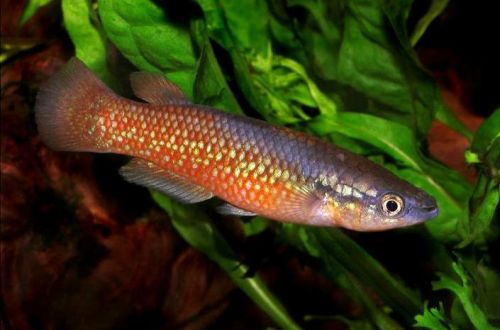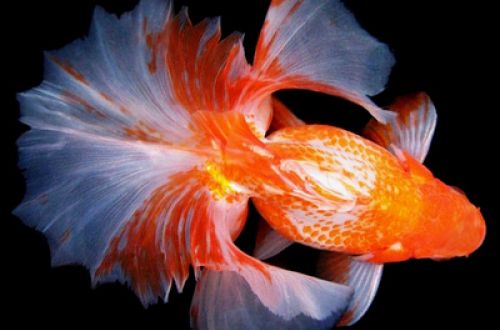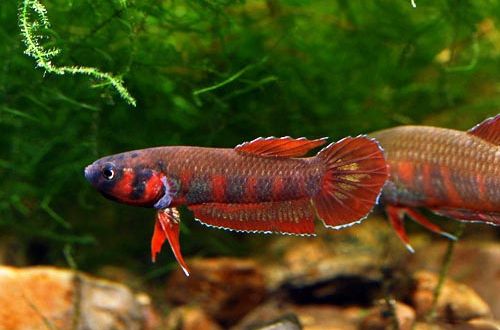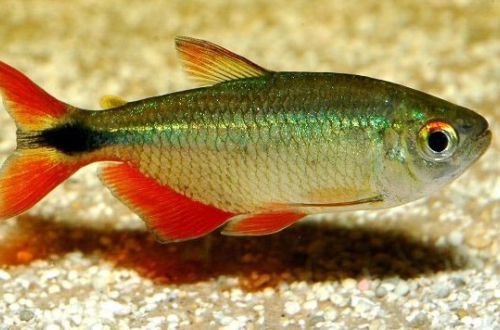
Madagascar Panhax
The Madagascar Panhax, scientific name Pachypanchax sakaramyi, belongs to the Aplocheilidae family. Quite popular in the aquarium hobby is the Killy fish, despite the almost complete disappearance in the wild. Successfully bred by many breeders and ordinary aquarists. Easy to maintain and unpretentious, in optimal conditions regularly gives offspring.

Contents
Habitat
It comes from a few river systems in the north of Madagascar, as well as the Seychelles (a region of East Africa). It lives both in fast mountain streams and in rivers on flat terrain under the cover of tropical forest, the channel is not distinguished by an abundance of aquatic vegetation.
Currently, this species is practically not found in nature. This is due to the degradation of the natural habitat due to human activities (deforestation, reduced river flow, pollution, etc.). Panhax experiences serious competition from invasive introduced species, for example, Gambusia.
Description
The species is quite large for Killy fish, adults in a home aquarium reach 9 cm in length. Males are larger, they are distinguished by a bright reddish color of the body with bright light speckles, the back is closer to purple. Females, on the contrary, show a faded silver coloration, characteristic specks are barely visible in the body pattern, but also very dull.
Food
Undemanding to food, will accept any dry food rich in protein. If possible, it is recommended to include in the daily diet meat products (mosquito larvae, small flies, worms, bloodworms, daphnia) in live or frozen form. Feed 2-3 times a day in the amount eaten in 5 minutes, all uneaten leftovers should be removed.
Maintenance and care
A group of several adult fish will feel great in a tank from 80 liters, in this case, be guided by the principle – the more the better. The design is simple, several plants with large leaves are used, including floating ones, the substrate is sandy or rocky with large boulders located everywhere.
The equipment consists of a heater, a lighting system and an aerator. Pay special attention to the choice of filter. Get the most efficient filtration system based on your financial capabilities and the volume of the aquarium, since the Madagascar Panhax needs crystal clear water and does not tolerate any pollution. In the absence of such an opportunity, it will be necessary to increase the amount of weekly renewed water from 15-20% to 30%. it is worth noting that its composition should be identical to aquarium water in terms of temperature and hydrochemical composition (pH and dGH).
Behavior and Compatibility
Relatively peaceful fish is compatible with most other species of similar temperament, however, smaller fish can be attacked and persecuted. Intraspecific relationships are built on the dominance of the alpha male, with the maintenance of several males, skirmishes are inevitable, which, however, rarely end in physical damage. However, the optimal combination has a group of one male and two or three females.
Breeding / breeding
Offspring can be obtained throughout the year. Under certain conditions, spawning can be organized in a common aquarium. These conditions include: species content, when there are no representatives of other species; the presence of shelters for juveniles in the form of dense thickets of small-leaved plants, for example, Javanese moss, Riccia and the like.
The female lays eggs in the thickets of plants, where fry appear after a while. They continue to live in their shelter until they are large enough to swim with adults. Parents usually do not eat offspring if they receive enough meat products.
Fish diseases
In a balanced aquarium with a well-established biological system and clean water, health problems do not arise. Diseases inherent in this species were also not noted. Read more about symptoms and treatments in the Aquarium Fish Diseases section.





